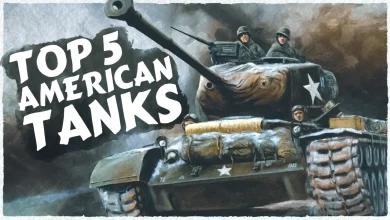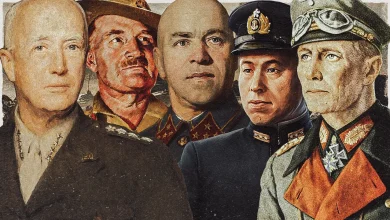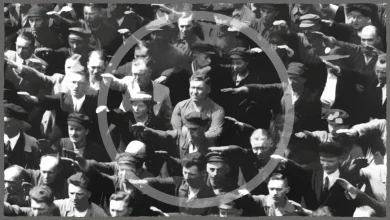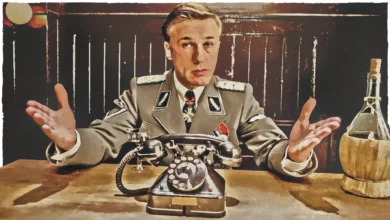Rommel’s Kampfstaffel
Discover how Erwin Rommel's Afrika Korps utilized many captured British armored vehicles in the North Africa during WW2.

Erwin Rommel was rightly called the “Desert Fox” for his brilliant handling of the German Afrika Korps for the series of seesaw battles against British Commonwealth forces in the Western Desert in North Africa.
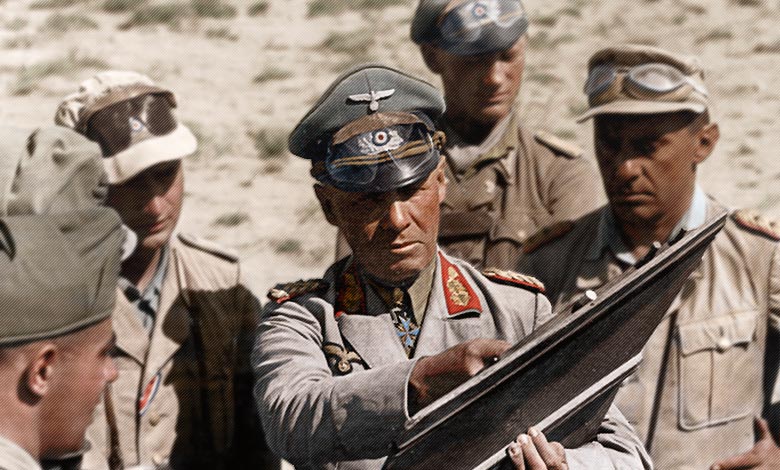
Rommel was kept permanently short of men, equipment, and supplies by Hitler, who foolishly didn’t take North Africa that seriously. Nonetheless, Rommel had been dispatched to Libya in February 1941 to prevent a complete Italian collapse, following a string of British Commonwealth victories.
“Although the British were superior in numbers, we attacked them at Michili on 6 April 1941. We even moved some of our forces to Derna in order to occupy the coast road and to stop the enemy’s withdrawal from Cyrenaica.”
— Erwin Rommel
The series of grueling desert battles had followed and by January 1942, Rommel was on the offensive again. Rommel would advance to the Gazala Line, just west of the city of Tobruk in Libya.
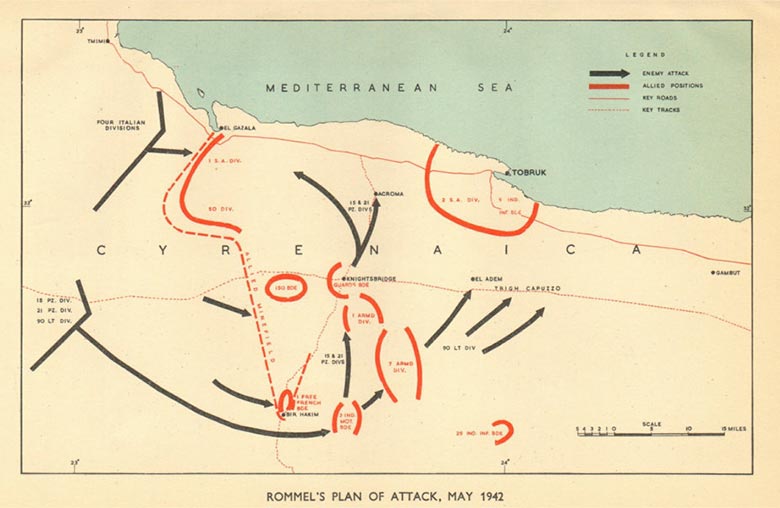
The Gazala Line was a strong British defensive position. While through the line, Rommel would advance along the coast road once more into Egypt, aiming for the Suez Canal, Britain’s lifeline to its Asian Empire.
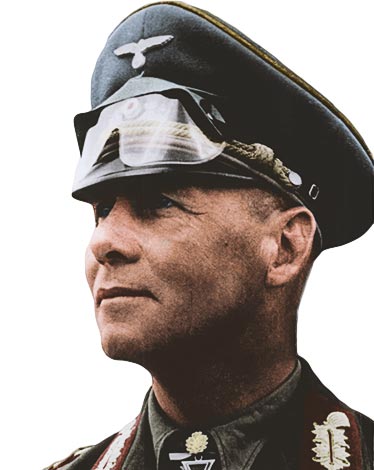
Rommel was quite unlike most other generals of World War 2. His style of leadership was often right up on the front lines and he required a small but highly mobile battle headquarters. When in the field it required a modest security element to protect it. With his penchant for intervening directly in the battle, Rommel personally created a unique combat force to protect his mobile headquarters, equipped largely with captured British vehicles. It was called the Kampfstaffel or ‘Kasta’ for short and in English could be translated as Combat Echelon.

After defeating British Commonwealth forces at El Agheila on the 21st of January 1942, Rommel advanced 400 miles east and on the Mediterranean coast to Gazala. He ordered the Africa Korps to form a Beuteabteilung (Captured Materiel Detachment, approximately battalion strength) out of captured British tanks and American tanks in British service.
Under the command of Lieutenant Colonel Ramsauer of the 15th Panzer Division, he quickly assembled an impressive number of vehicles. Rommel then placed the Beutepanzerkompanie (Captured Materiel Tank Company) into his new Kampfstaffel.

Rommel knew his headquarters needed tanks as he was always close to the front, were actually, involved in combat and his two Panzer divisions were short of German tanks, better than to use British equipment than to thin out the tank regiments in his main combat divisions.
The vehicles needed to be both mobile and reasonably protected from aerial attacks in the desert. From March to April 1942, Beuteabteilung consisted of 12 British Mk.III Cruiser tanks and 2 Mk.VI Crusaders. The Cruiser Mk.III weighed 16 tons and was armed with a 40 mm gun while the Crusader was heavier at 20 tons but with the same caliber gun.

On the 26th of May 1942, Rommel approved the addition of a company of motorized infantry, named Company von Koenen after its commander, added to the Kampfstaffel, drawn from the elite Brandenburg regiment. Anti-tank and anti-aircraft defense were crucial and the Kampfstaffel received a battery of 10 20 mm Flak guns mounted in trucks and an anti-tank battery of 3 50 mm PaK 38 and a single 75 mm PaK 40. There were also 8 of the dreaded 88 mm anti-aircraft guns used in the ground roll.
Other units in the Africa Korps also used captured British equipment. A great many trucks and cars were pressed into service along with captured armored cars and Bren gun carriers. Due to chronic equipment shortages both the 15th and 21st Panzer Divisions established small units have captured British tanks, eventually, these units were amalgamated into a single entity that used about 18 British tanks Matildas, Valentines, and Crusaders.
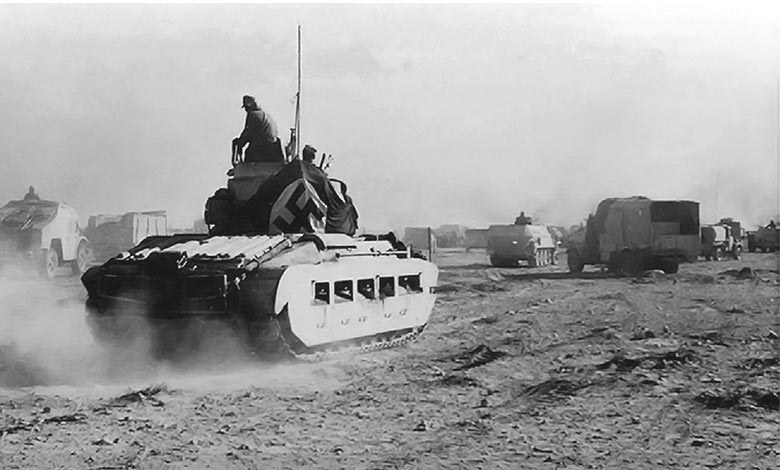
Rommel’s headquarters utilized 3 captured AEC Dorchester Armored Command Vehicles, huge boxes on wheels that he had taken from British generals in the campaign. Rommel’s headquarters protection unit was in effect a powerful little battle group of about 530 all ranks. The Kampfstaffel often fought exactly like a small Kampfgruppe, Rommel using it during attacks without reference to nearby German or Italian units. Sometimes, Rommel strayed so far forward that he risked death or capture and the strong Kampfstaffel certainly proved its value in protecting him.

From the German attack on the British Gazala Line, shortly after the formation of the Kampfstaffel, Rommel with his headquarters and his escort Echelon from the Kampfstaffel was trying to find the reconnaissance battalion of the 21st Panzer Division, instead, Rommel bumped into three British Cruiser tanks which proceeded to destroy his radio vehicle, incidentally another captured British vehicle.

Rommel’s protection unit had recently acquired a platoon of 4 captured British 40 mm or 2 pounder truck-mounted anti-tank guns known as Portee. They hit the Cruiser tanks multiple times forcing their retirement. 15 minutes later the rest of the Kampfstaffel closing up behind Rommel in the lead ran across a British artillery battery also on the march, the Kampfstaffel attacked and scattered the British.
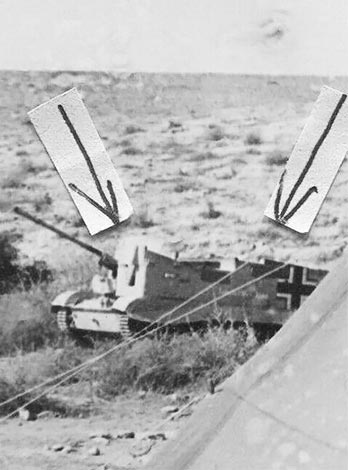
Capturing a useable 25-pounder gun and its towing tractor which was added to the Kampfstaffel of strength and knocking out another gun and 3 tractors, plus taking 29 prisoners.
Soon the Kampfstaffel found itself in the middle of a serious battle, the 2:30 p.m. British aircraft, strafe Rommel’s headquarters unit, knocking out another captured British AEC “Dorchester” Armoured Command Vehicle.
Two hours after that the Kampfstaffel was directly assaulted by a strong British attack. The Kampfstaffel was protecting Rommel and his staff, who were the headquarters, Panzer Army Africa. So you can imagine if Rommel had been killed at that point or captured, the entire course of the war in North Africa would have been dramatically affected.

The Kampfstaffel’s German PaK anti-tank guns knocked out 9 British Cruiser tanks, 2 armored reconnaissance vehicles, and 2 trucks in the exchange of fire. The next day 28th of May 1942, Rommel’s battle headquarters was attacked by 15 to 20 Cruiser tanks, in 20 minutes the Kasta’s 88 mm FlaK battery destroyed 13 British tanks, 3 of which managed to get to within 50 meters of Rommel’s headquarters.

During the Gazala Line battle, the Germans captured several intact Honey tanks. The Honey was the British name for the American M3 Stuart light tank, an effective desert vehicle because of its high mobility, and it’s 37 mm gun was found to be fairly effective against German armor. Rommel had 2 Honey tanks serving with the Kampfstaffel at various times.
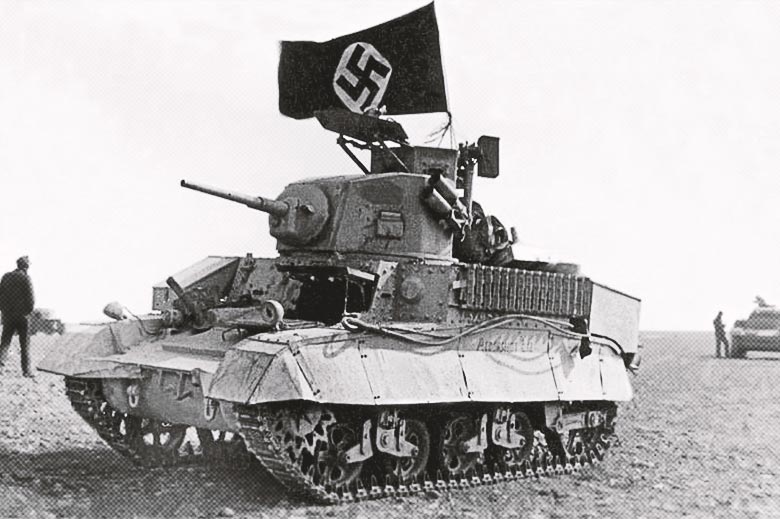
Rommel never made it to the Suez Canal. He was defeated at the Second Battle of El Alamein. From October to November 1942, one of the turning points of the war, who forced to retreat west, was pursued by General Bernard Montgomery’s Desert Rats.

Many more battles followed before the German and Italian forces were bottled up in Tunisia in 1943 by British Forces advancing from the east and U.S. forces from the West, ending with the final German surrender in May 1943.
The question is, did British Commonwealth forces reuse enemy equipment in North Africa? The answer is yes. In the early days of the campaign, the British were also short of armor, so when 60 intact Italian tanks were captured at Beda Fomm in March 1941, they were used to equip the 6th Royal Tank Regiment, needless to say, their thin armor and poor mechanical reliability did not endear them to their British cruise.
